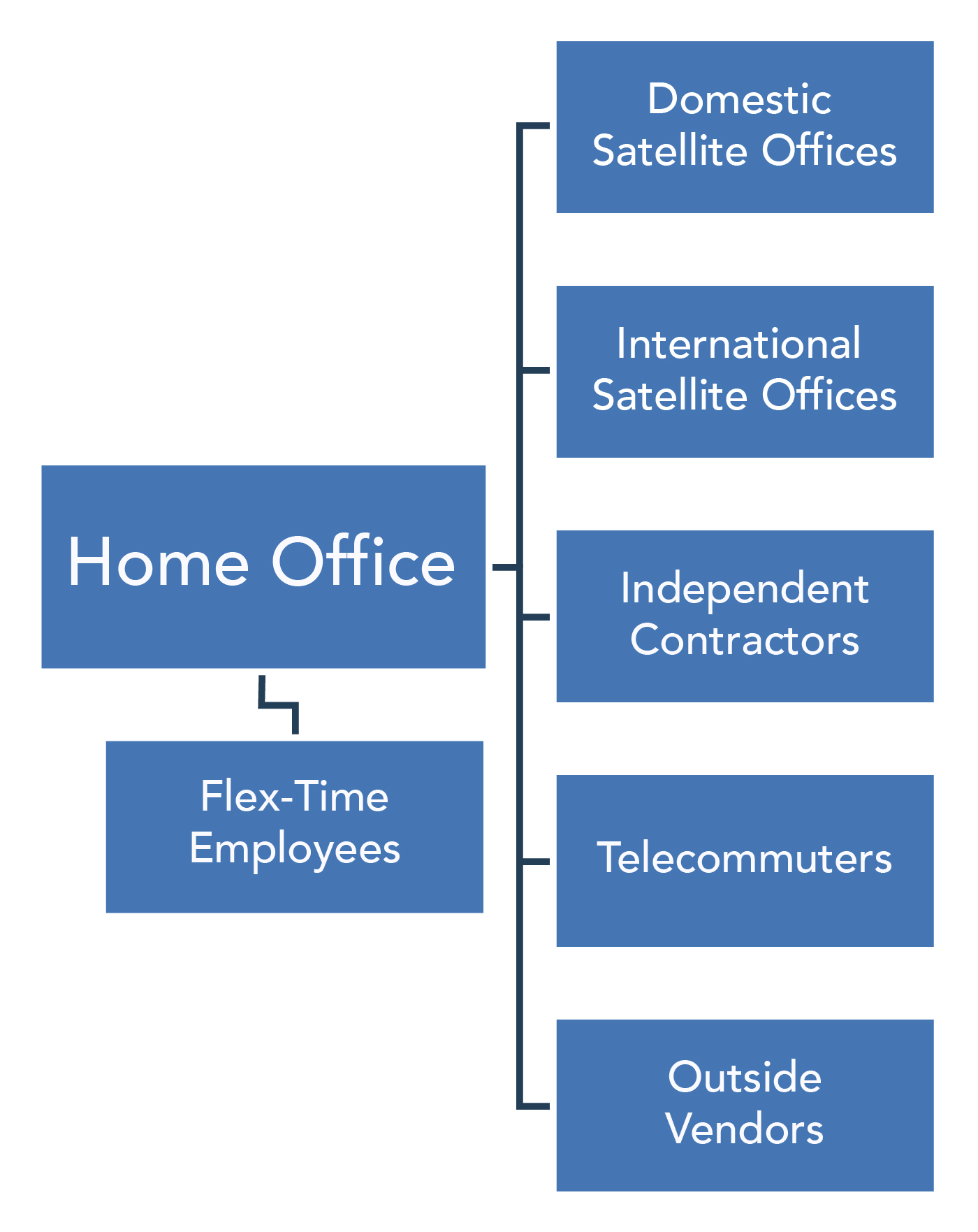19.13: Authority and Accountability
- Page ID
- 47202
- Describe how to identify lines of authority and accountability
In a small business, everyone reports to the owner, right? Well, in a manner of speaking, yes. But as a business grows, there are certainly decisions to be made around who reports to whom, and how work best gets done.
Determining lines of authority and accountability for a small business clears up a lot of gray area that can slow down a well-meaning group of employees. As we discussed earlier, employees of a small business often wear many hats, and a clear reporting structure can be a casualty of that kind of arrangement. For example, if Sue tells Joe to perform “task A” and Sasha tells Joe to perform “task B,” Joe might have to decide between the two tasks. If he doesn’t consider Sue or Sasha his manager, Joe could have a hard time prioritizing the tasks and make a wrong decision around which one is more important.
Enter the organizational structure, aiding Joe in understanding who his manager is and what tasks he’s responsible to complete.
Just like larger companies, there are various organizational structures a small business can employ to help organize and manage people and their workloads. Some questions to ask when deciding how to arrange lines of authority:
- Will the business benefit from a top down structure, where the owner/CEO makes all the decisions and others abide? Or would it be better to involve all the employees in making decisions, so the business can benefit from their expertise?
- Is the business better divided up by function? Or maybe geographic region?
- Would employees benefit from being grouped into teams to see a product or service through from inception to sale?
A wide variety of organizational structures exist to help define lines of authority and accountability, and every business uses one, whether it’s an informal or formal adoption. Here are a few that work well for small businesses:
- functional organizational structure
- matrix organizational structure
- divisional organizational structure
- virtual organizational structure
Functional Organizational Structure
New businesses and small businesses often have at least three major functions – the sales/marketing function, the financial function, and the operations function. A logical way to organize a business would be to place all of the financial function under the financial leader, all of the operations function under an operations leader, and so on. For larger small businesses, there might be “sub-functions.” HR, for instance, might have a leader over their HR generalists, a training department, and payroll. All of those would be sub-functions within the HR function.
The functional organizational structure provides focus for the employees and groups them into teams that focus on a specific business need.
Matrix Organizational Structure
Practically the opposite of a functional structure, the matrix organizational structure groups employees into teams. For instance, there might be a sales and marketing person, and operations person, and a financial/accounting person on each team. The business might have teams set up to serve specific clients. This kind of structure might be found in a small advertising firm, where a team serves the needs of one specific client.

Matrix organizational structures can be a bit confusing for employees, in that it’s not always clear to whom they report (a team leader? the leader of their specific function?) Still, for some businesses, this is the best way to manage client work.
Divisional Organizational Structure
This kind of structure benefits a business that is dealing with clients in different geographic regions, or possibly a business that makes different products or services different types of clients. Zingerman’s, a nationally known deli in Ann Arbor, Michigan, started out making sandwiches for hungry college students. They made their bread in house for their sandwiches, and soon it was in high demand. Now, Zingerman’s has a deli, but also a bakehouse from which they distribute bread to local specialty food stores, a creamery from which they distribute their cheese, and even a training division, because the business is noted for their excellent customer service. Zingerman’s is still a small business but divided up into divisions that each have their own leader and perform their own function.

Virtual Organizational Structure

Some small businesses outsource most or all of their functions. For instance, Paul Newman’s “Newman’s Own” brand is almost completely outsourced, with one company providing a product, another providing procurement, and so on. If you have a small core group of people in a central office, they would ultimately manage the virtual providers of these services.
Movie production companies also operate as virtual organizations, hiring teams of people to perform the different duties on location and afterwards, rather than keeping them all on the payroll.
Often, small businesses and their lines of authority and accountability grow organically, and as the business evolves their needs will change. An organizational structure that works for the business in year three might not be the same structure they’re using in year seven. That’s perfectly fine—an HR professional can help transition employees from one kind of structure to another as seamlessly as possible, without too much disruption to productivity.
Contributors and Attributions
- Authority and Accountability. Authored by: Freedom Learning Group. Provided by: Lumen Learning. License: CC BY: Attribution
- Image: Functional Organizational Structure. Provided by: Lumen Learning. License: CC BY: Attribution
- Image: Matrix Organization. Provided by: Lumen Learning. License: CC BY: Attribution
- Image: Divisional Organizational Structure. Provided by: Lumen Learning. License: CC BY: Attribution
- Image: Virtual Organizational Structure. Provided by: Lumen Learning. License: CC BY: Attribution



